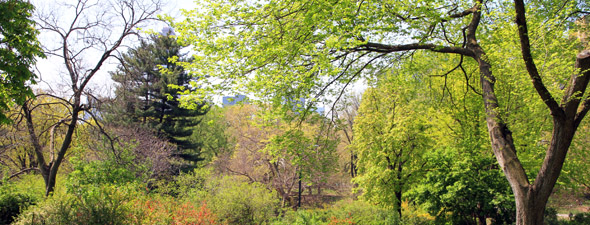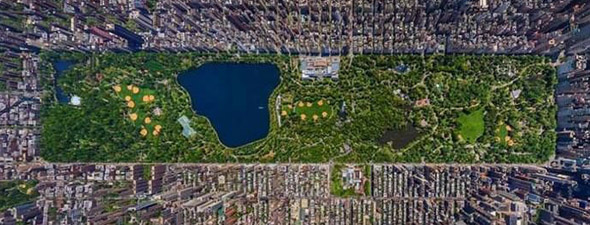Excerpts from conversations at the Call of the Wild Workshop

Is this a wild landscape?

What about this landscape?
The top photograph is of Strawberry Fields, a section of NYC's Central Park; the bottom photograph is an aerial view of Central Park.
Can we conceptualize wildness outside of the human experience?
"Belknap observes that all the workshop papers have shown how wildness is defined in relation to humans. Would a wildness be less muddled is we remove humans or would it be impossible to define? Similarly Michaela Thompson points out the inherent value judgments related to wild things, like the probiotic bacteria in the human microbiome vs. antibiotic resistant bacteria."
Would the conservation movement have happened without the ambivalent boundary concepts of wildness?
"Ritvo comments that the danger of undue clarity may not be all that pressing. Articles in the Sierra Club magazine, for example, are careful not to describe places as pristine or virgin, but advertisements in that same magazine preserve this problematic language. Both the uncritical and the problematized meanings of wild can operate at the same time."
What does the wild look like?
"Berris Charnley refers to an essay in Uncommon Ground (Anne Whiston Spirn’s “Constructing Nature: The Legacy of Frederick Law Olmsted”) that contrasts the artificiality of Central Park with the fact that most visitors consume it as a natural occurrence. Harriet Ritvo mentions that in her undergraduate environmental history course she shows students an image of Central Park. When asked if it is natural, most students answer affirmatively. But when Ritvo shows them an aerial image of the park, revealing its geometric design, the students question their initial response."